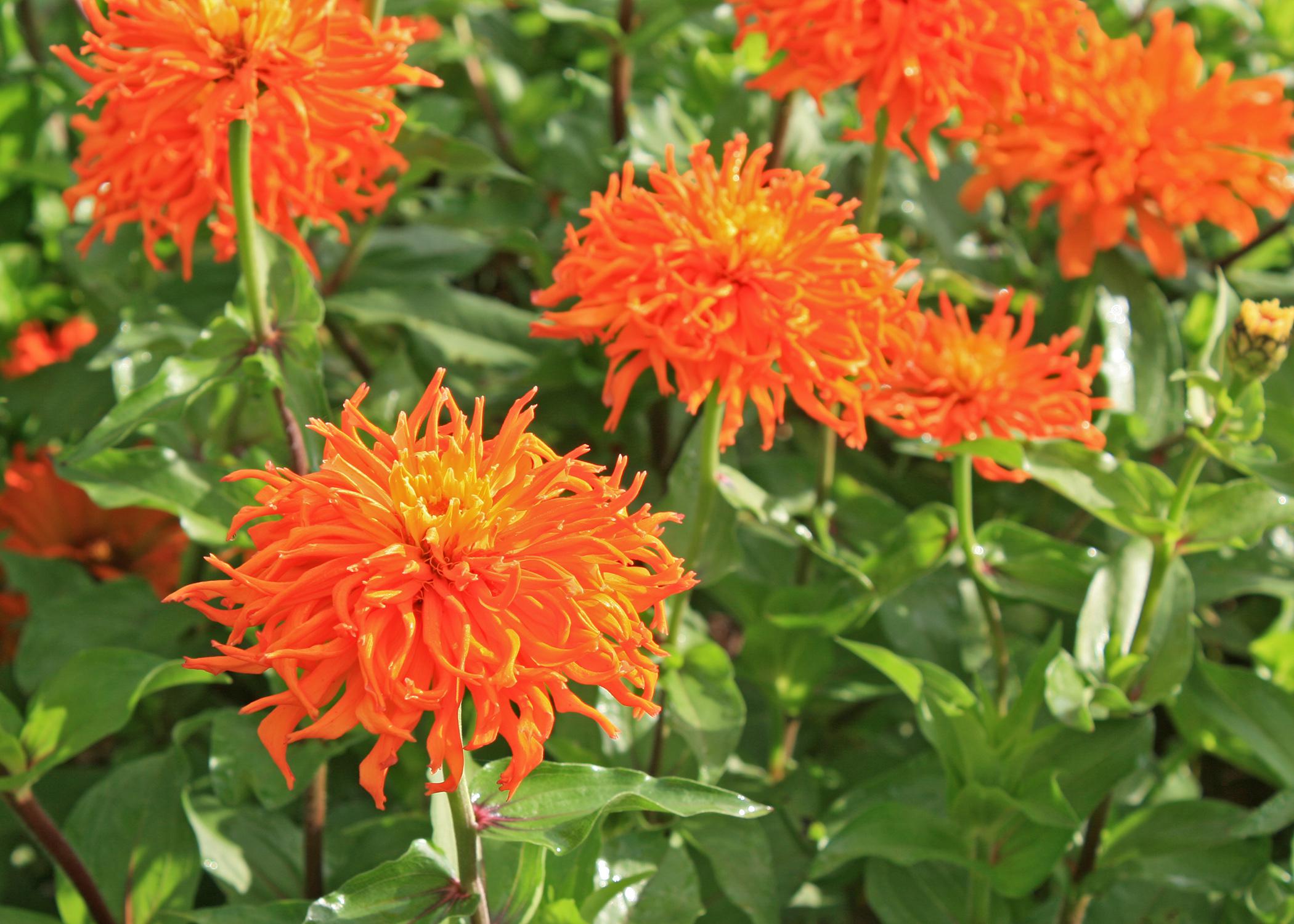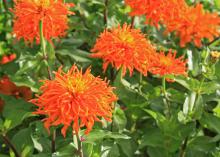Information Possibly Outdated
The information presented on this page was originally released on October 13, 2014. It may not be outdated, but please search our site for more current information. If you plan to quote or reference this information in a publication, please check with the Extension specialist or author before proceeding.
Summer zinnias recharge in fall's cooler weather
It’s not just people who are happy when temperatures finally start to decrease in the fall. Many summer-flowering annuals that look pretty worn out at Labor Day get a second wind and perk back up.
For this reason, late September and October give us some of the best annual color of the entire year.
Some of my favorite fall-flowering summer annuals are Zahara zinnias, which produce mounds of colorful flowers. The plants are robust and have excellent branching to support the many flowers. Plus, these plants have a natural resistance to powdery mildew.
I really like the double-flowered selections Double Cherry and Double Fire. Double Cherry has deep-magenta blooms, while Double Fire is a hot scarlet-orange. Each has centers that lighten as the flowers mature.
I also like the bicolor selections. A favorite of mine is Starlight Rose, which has white petals with a splash of deep rose shining from the center. The deep-rose coloration is highly variable and does not develop very well when nights are warm. But when the fall cools off, the red stripe thickens and becomes more pronounced.
A newer introduction I really like is Sunburst. These flowers open gold, followed by the appearance of a red stripe down the center of the petals. Best yet is the fact that Sunburst flower colors are very consistent throughout the flowering season.
Zahara zinnias are well suited for container gardening. You can extend the flowering season by bringing the containers inside when cold weather arrives.
As gorgeous as Zahara zinnias are in the fall, they just may take a backseat to cactus-flowered zinnias. These zinnias may seem like a new type for the landscape, but they are actually heirloom zinnias that have been around since the 1920s.
Their flowers have a completely different texture than what you may be familiar with. Each full double flower displays masses of thin, almost needle-like petals.
Cactus-flowered zinnias come in a range of long-lasting flower colors, but it’s hard to ignore the variety called Inca. This selection has spectacularly vivid, blazing-orange flowers. Typically these plants will grow to 30 inches tall with sturdy stems. The stems need to be sturdy because each flower can be 5 inches in diameter.
When growing yours at home, keep a 2- to 3-inch layer of mulch to maintain soil moisture. Although zinnias are tolerant of drought conditions, they still need supplemental irrigation during periods of extreme drought. Irrigation needs drop dramatically with the onset of lower temperatures. If you do irrigate your fall zinnias, I find soaker hoses or other drip-type systems are superior and efficient methods of maintaining soil moisture.
And even though it is the fall, don’t neglect the feeding needs of your zinnias. I recommend you use a water-soluble fertilizer as an easy way to keep the plants fed this fall.
So go ahead and enjoy the fall resurgence of zinnias in your landscape. There will be plenty of time to plant traditional cool-season flowering annuals later this fall.



